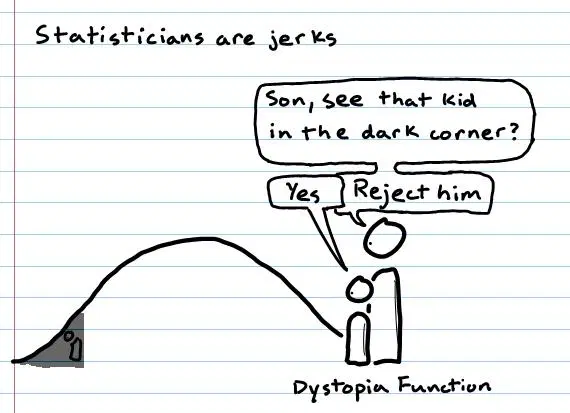8 Hypothesis testing
In the prior chapters, we have been dealing with three of the core goals of statistics: visualization of data (i.e., scatterplots, histograms, etc.), description of the data (i.e., mean, mode, SD, etc), and relationships among variables (e.g., correlation, regression). In this chapter, we will deal with a fourth main goal of statistics: to tell if something (one thing) or somethings (many things) are different.
There is an amazing level of complexity to that single question, of whether a thing or set of things are different. In this chapter, I want to break that complexity into its peaces, so you can better comprehend the results of any test aimed at testing for significant differences.

Figure 8.1: Rejecting the extremes or special
Expectation for this chapter
At the end of this chapter, it is expected that you:
Can state a null hypothesis and alternative hypothesis.
Can interpret the level of significance and the critical values.
Can interpret the p-value.
Can interpret the different types of errors when making a conclusion on a hypothesis.
Alright, let’s get to it.